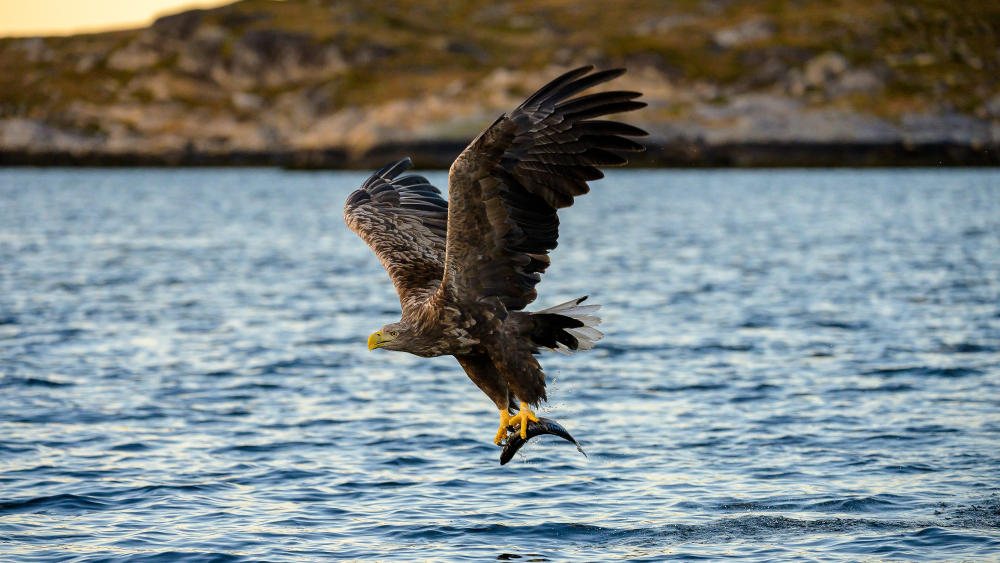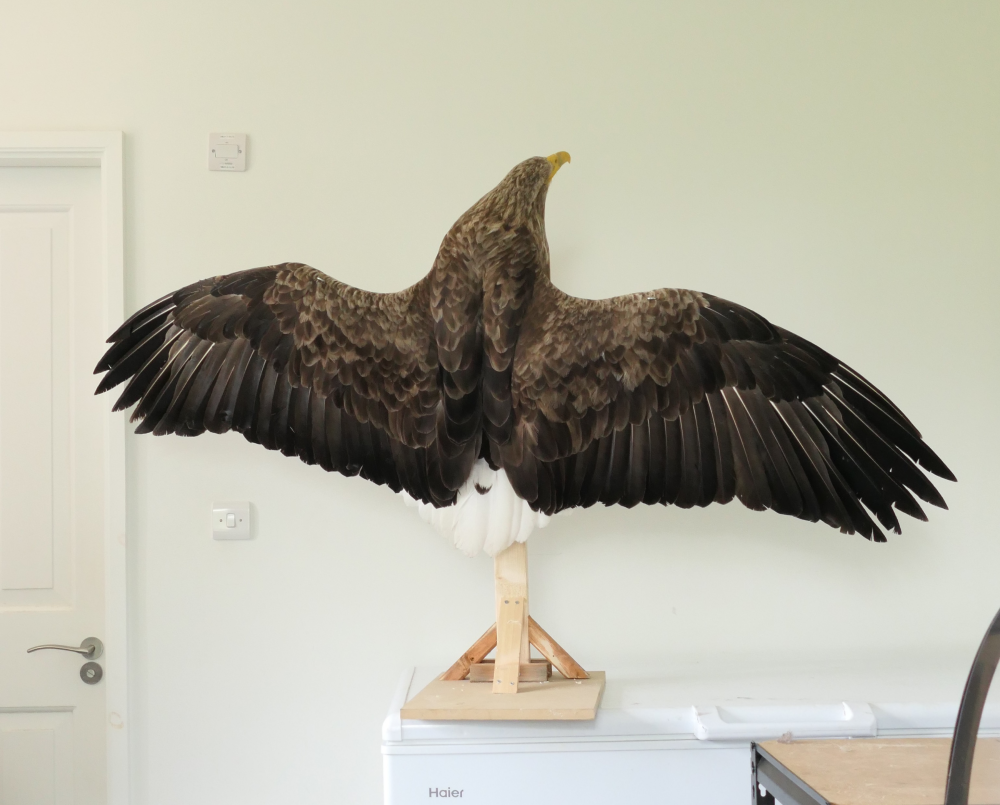Remarkable white-tailed eagle specimens star in the Natural History Museum, London’s exhibition Birds: Brilliant And Bizarre, created in affiliation with the Royal Society for the Protection of Birds (RSPB). These rare birds are the fourth largest eagles in the world, but almost went extinct in Europe in the 19th century. Now, thanks to a conservation effort that nearing its 50th birthday, they’re making a comeback.
Award-winning taxidermist Elle Kaye was tasked with transforming the carcasses of several white-tailed eagles (Haliaeetus albicilla) for the exhibition. As a bird taxidermist, Kaye only works with birds that have died of natural causes. Wwe spoke to her about the process, what it takes to turn an animal that’s died into a lasting specimen, and the tricks employed by taxidermists when working with animals that have died naturally and don’t always come complete.
The decomposition ecosystem tells us how quick nature is to turn carcasses into mountains of food for raising baby bugs – and yet in museum collections, we find seemingly intact animal specimens that can date back hundreds of years. So, how does taxidermy defeat decay?
Dave Sexton is the RSPB Scotland officer on the Isle Of Mull and has been monitoring the island’s white-tailed eagles since 2003, but he was also employed to protect the island’s first nest back in 1984. At that time, egg collectors remained a significant threat to these animals, but they celebrated their first fledged chicks in 100 years in 1985.
“We witnessed that the first chick hatching, growing up and fledging, and that’s where it all began,” Sexton told IFLScience. “There’s now 23 pairs of white-tailed eagles here, and about 150+ pairs across Scotland.”
The conservation project to protect white-tailed eagles turns 50 next year, and is a collaboration between Police Scotland, Nature Scot (who started the project back in 1975), RSPB Scotland, Mull & Iona Community Trust, and Forestry And Land Scotland. They are the five partners who run Mull Island Eagle Watch, and it’s been very successful for the island and its birds in more ways than one.
“We raise quite a lot of money during the [tourist] season and that money goes back into the local community as small grants,” continued Sexton. “The eagles are putting money back into the island in a way that’s quite unique[…] It’s an interesting mix of community, island life, and living with the eagles.”

The return of white-tailed eagles to the Isle Of Mull has benefited the wildlife and the people.
Image credit: Stuedal / Shutterstock.com
Human persecution remains one of the biggest threats to white-tailed eagles that are legally protected, but outside of Mull, unfortunately getting shot or poisoned remain quite high on their list of threats. The spread of highly pathogenic bird flu is another, and Sexton’s team has already noticed some fledgling chicks dying as a result of being brought infected food by their parent.
Death is a fact of life for wild animals. On the rare occasion that wildlife institutions or scientists come across their carcasses before decomposition has heavily set in, taxidermy is a useful method for enabling others to learn from dead animals. This is what happened in the case of several white-tailed eagles that had been found dead and frozen in Sweden that were then shared with Tring Natural History Museum and Natural History Museum, London, so that Kaye could taxidermy their remains for display.
As for how that magic happens, it seems creating a likeness of a living animal that can endure for hundreds of years is a delicate and lengthy process.

One of the white-tailed eagles prepared by Elle Kaye for the Natural History Museum, London, exhibition.
Image courtesy of Elle Kaye.
“Once we have the skin removed from the carcass, we use the carcass to take our anatomically accurate measurements that inform our model,” Kaye told IFLScience. “We then process the skin, make sure it’s clean of any fascia, sinew, any organic material that might rot or decompose and then we preserve the skins.”
“We use a whole assortment of various chemicals to make sure that skin changes from an organic thing to something that is stable like a material. Once we have the preserved skin, we have our model made, we can harmoniously combine the two, dress the preserved skin over the model, and have a piece of taxidermy.”
Such specimens can then contribute to research as well as go on display, and can be a way to showcase the ingenuity of wild species without having to disturb living animals.
“They’re such rare and unusual specimens, so it’s been a real pleasure,” said Kaye. “We are so lucky to have such a beautiful array of specimens in the exhibition so people can really connect to the wildlife that we have on our coasts here in the UK.”
You can see them at Birds: Brilliant And Bizarre open until January 5, 2025.
Source Link: The World’s Fourth-Largest Eagle Is Making A Comeback In Europe